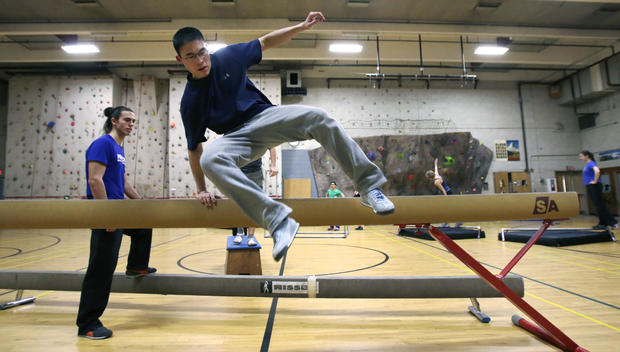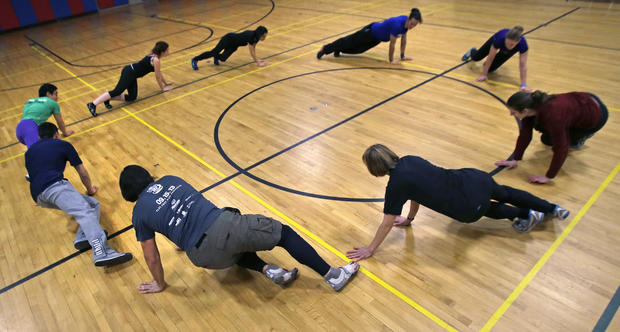Parkour fitness craze born out of YouTube fad
BROOKLINE, Mass. -- The spirited sport known as parkour that treats the world as one big obstacle course is gaining traction outside of the urban enthusiasts whose YouTube-worthy acrobatics spread its popularity.
Once the domain of the outdoor anti-athlete, it's becoming the go-to sport for people who just want a good workout.
Jessamyn Hodge, a 32-year-old software and information engineer from South Boston, recently prepped for her first parkour class at a high school gym in suburban Brookline. She was hoping to learn the kind of wall-scaling, fence-vaulting, obstacle-conquering moves she'd already seen in online videos shared by her rock-climbing friends.
"It's like dancing at high speed," she said. "It reminds me of being a kid again, like monkeying around on anything and everything, clambering about, generally having fun while getting around."
Parkour, developed in France in the 1980s, borrows elements from martial arts, gymnastics, rock climbing and other athletic fields to enable participants to turn obstacles like park benches, trees, guardrails, and buildings into tools they can use to nimbly propel themselves forward.
Parkour's developers were influenced by military training principles. Since then, some of the sport's most spectacular moves have been featured in movie sequences, video games and advertisements. One of the most recognizable is a chase scene in the 2006 James Bond movie "Casino Royale."
Beginners who want to hit the ground running - but maybe not by running up a construction crane, James Bond-style - have the option of classes like those offered by London-Based Parkour Generations, a business with affiliates in California, Pennsylvania, Texas and Wisconsin, and that offers instruction in several countries including Thailand, Singapore and Brazil.
Classes include a warm-up, technical drills to learn the basics of safety and games to teach and reinforce parkour techniques. At the Brookline class, instructors set up metal bars they called scaffolding and vault boxes in the gym, teaching students how to walk on or hurtle over balance beams and lift, leap or weave their way through whatever else was in their path. Both newcomers and advanced learners trained together, but those with more experience were given more challenging training.
Instructor Blake Evitt said many of the new students he sees view parkour as a functional way to get fit. But parkour offers more than flashy stunts - it's a way for people to test their physical and mental limits.
"It's almost a way of life," said Evitt, a director of the U.S. branch of Parkour Generations.
Julio Sepulveda, a climate-change researcher, who takes classes in the Boston suburb of Somerville, Mass., said parkour is very accessible because learners don't need access to fancy, expensive gear to get into it. They can simply walk to a nearby park and use the existing environment to practice.
"And it's really all about your flow . the flow of your movements and . your mind, which is really cool," Sepulveda said after catching his breath. "So it's a nice connection between your mind and your body."

